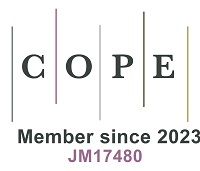REFERENCES
1. World Wildlife Fund. World conservation strategy: living resource conservation for sustainable development; Gland, Switzerland: IUCN, 1980.
2. United Nations. Department of Economic and Social Affairs Sustainable Development. Available from: https://sdgs.un.org/goals [Last accessed on 26 Feb 2025].
3. Rees, W. E. Ecological footprints and appropriated carrying capacity: what urban economics leaves out. Environ. Urban. 1992, 4, 121-30.
4. Wackernagel, M.; Rees, W. What is an ecological footprint? In: Beatley T, Wheeler SM, editors. The sustainable urban development reader. Routledge; 2004. p. 9.
5. Wackernagel, M.; Galli, A. An overview on ecological footprint and sustainable development: a chat with Mathis Wackernagel. Int. J. Eco. 2007, 2, 1-9.
6. Rees, W.; Wackernagel, M. Urban ecological footprints: why cities cannot be sustainable - and why they are a key to sustainability. In: Marzluff JM, Shulenberger E, Endlicher W, et al., editors. Urban ecology. Boston, MA: Springer; 2008. pp. 537-55.
7. Wiedmann, T.; Minx, J. A definition of 'carbon footprint'. In: Ecological economics research trends; Nova Science Publishers, 2008; pp 1-11.
8. Pandey, D.; Agrawal, M.; Pandey, J. S. Carbon footprint: current methods of estimation. Environ. Monit. Assess. 2011, 178, 135-60.
9. Hoekstra, A. Y.; Hung, P. Q. Virtual water trade: a quantification of virtual water flows between nations in relation to international crop trade. Available from: https://cir.nii.ac.jp/crid/1570291225073276288 [Last accessed on 28 Feb 2025].
10. Hoekstra, A. Y.; Mekonnen, M. M. The water footprint of humanity. Proc. Natl. Acad. Sci. USA. 2012, 109, 3232-7.
11. Lovarelli, D.; Bacenetti, J.; Fiala, M. Water footprint of crop productions: a review. Sci. Total. Environ. 2016, 548-9, 236-51.
12. Outka, U. The renewable energy footprint. Stan. Envtl. L. J. 2011, 30, 241. Available from: https://hdl.handle.net/1808/11554 [Last accessed on 26 Feb 2025].
13. Pan, W.; Hu, C.; Huang, G.; Dai, W.; Pan, W. Energy footprint: concept, application and modeling. Ecol. Ind. 2024, 158, 111459.
14. Walsh, C.; O'regan, B.; Moles, R. Incorporating methane into ecological footprint analysis: a case study of Ireland. Ecol. Econ. 2009, 68, 1952-62.
15. Fernández-Amador, O.; Francois, J. F.; Oberdabernig, D. A.; Tomberger, P. The methane footprint of nations: stylized facts from a global panel dataset. Ecol. Econ. 2020, 170, 106528.
16. Leach, A. M.; Galloway, J. N.; Bleeker, A.; Erisman, J. W.; Kohn, R.; Kitzes, J. A nitrogen footprint model to help consumers understand their role in nitrogen losses to the environment. Environ. Dev. 2012, 1, 40-66.
17. Galloway, J. N.; Winiwarter, W.; Leip, A.; Leach, A. M.; Bleeker, A.; Erisman, J. W. Nitrogen footprints: past, present and future. Environ. Res. Lett. 2014, 9, 115003.
18. Shibata, H.; Galloway, J. N.; Leach, A. M.; et al. Nitrogen footprints: regional realities and options to reduce nitrogen loss to the environment. Ambio 2017, 46, 129-42.
19. Metson, G. S.; Bennett, E. M.; Elser, J. J. The role of diet in phosphorus demand. Environ. Res. Lett. 2012, 7, 044043.
20. Jiang, S.; Hua, H.; Sheng, H.; et al. Phosphorus footprint in China over the 1961-2050 period: historical perspective and future prospect. Sci. Total. Environ. 2019, 650, 687-95.
21. Li, B.; Yin, T.; Udugama, I. A.; et al. Food waste and the embedded phosphorus footprint in China. J. Cleaner. Prod. 2020, 252, 119909.
22. Weinzettel, J.; Hertwich, E. G.; Peters, G. P.; Steen-Olsen, K.; Galli, A. Affluence drives the global displacement of land use. Global. Environ. Chang. 2013, 23, 433-8.
23. Bruckner, M.; Fischer, G.; Tramberend, S.; Giljum, S. Measuring telecouplings in the global land system: a review and comparative evaluation of land footprint accounting methods. Ecol. Econ. 2015, 114, 11-21.
24. Liu, X.; Yu, L.; Cai, W.; et al. The land footprint of the global food trade: perspectives from a case study of soybeans. Land. Use. Policy. 2021, 111, 105764.
25. Wiedmann, T. O.; Schandl, H.; Lenzen, M.; et al. The material footprint of nations. Proc. Natl. Acad. Sci. USA. 2015, 112, 6271-6.
26. Hoekstra, A. Y.; Wiedmann, T. O. Humanity’s unsustainable environmental footprint. Science 2014, 344, 1114-7.
27. Zhao, Q.; Wen, Z.; Toppinen, A. Constructing the embodied carbon flows and emissions landscape from the perspective of supply chain. Sustainability 2018, 10, 3865.
28. Ma, W.; Opp, C.; Yang, D. Past, Present, and future of virtual water and water footprint. Water 2020, 12, 3068.
29. Liu, X.; Klemeš, J. J.; Varbanov, P. S.; Čuček, L.; Qian, Y. Virtual carbon and water flows embodied in international trade: a review on consumption-based analysis. J. Clean. Prod. 2017, 146, 20-8.
30. Tian, X.; Bruckner, M.; Geng, Y.; Bleischwitz, R. Trends and driving forces of China’s virtual land consumption and trade. Land. Use. Policy. 2019, 89, 104194.
31. Wiedmann, T.; Barrett, J. Policy-relevant applications of environmentally extended mrio databases - experiences from the UK. Econ. Syst. Res. 2013, 25, 143-56.
32. Cerutti, A. K.; Pairotti, M. B.; Martini, F.; Vesce, E.; Beltramo, R.; Padovan, D. Evaluation of the energy consumption and greenhouse gas emission related to Italian food consumption with an hybrid LCA-IO method; 2012, pp. 1-10. Available from: https://www.carloalberto.org/wp-content/uploads/2018/11/no.262.pdf [Last accessed on 26 Feb 2025].
33. Schmidt, J. H. Full integration of LCA with other assessment tools - new application areas and harmonized modelling approaches. Available from: https://lca-net.com/files/Full-integration-of-LCA-with-other-assessment-tools-extended-abstract.pdf [Last accessed on 26 Feb 2025].
34. Tan, Q.; Han, J.; Liu, Y.; Wang, X. Assessing the sectoral water-energy-emissions nexus in North China: an input-output framework combining intersectoral footprint and SDA method. J. Renew. Sustain. Energy. 2024, 16, 035904.
35. Henderson, P.; Hu, J.; Romoff, J.; Brunskill, E.; Jurafsky, D.; Pineau, J. Towards the systematic reporting of the energy and carbon footprints of machine learning. J. Mach. Learn. Res. 2020, 21, 1-43.
36. Romaguera, M.; Hoekstra, A. Y.; Su, Z.; Krol, M. S.; Salama, M. S. Potential of using remote sensing techniques for global assessment of water footprint of crops. Remote. Sens. 2010, 2, 1177-96.
37. Kuzyk, L. W. Ecological and carbon footprint by consumption and income in GIS: down to a census village scale. Local. Environ. 2011, 16, 871-86.
38. Donthu, N.; Kumar, S.; Mukherjee, D.; Pandey, N.; Lim, W. M. How to conduct a bibliometric analysis: an overview and guidelines. J. Bus. Res. 2021, 133, 285-96.
39. van Eck NJ, Waltman L. Software survey: VOSviewer, a computer program for bibliometric mapping. Scientometrics 2010, 84, 523-38.
40. Chen, Y.; Chen, C.; Liu, Z.; et al. The methodological function of CiteSpace knowledge graph. Sci. Res. 2015, 33, 242-53. Available from: https://www.scirp.org/reference/referencespapers?referenceid=3355668 [Last accessed on 26 Feb 2025].
41. Paris Agreement. Report of the conference of the parties to the United Nations framework convention on climate change (21st session); 2015.
42. Wiedmann, T.; Barrett, J. A review of the ecological footprint indicator - perceptions and methods. Sustainability 2010, 2, 1645-93.
43. Wang, A.; Wang, S.; Liu, T.; Yang, J.; Yang, R. Spatial-temporal evolution analysis and deep learning inversion of water- carbon-three-dimensional ecological footprint of urban agglomeration in the middle reaches of the Yangtze River. Desalin. Water. Treat. 2023, 290, 193-200.
44. Jin, K.; Zhang, S.; Yang, Y.; et al. Evaluation of water-carbon-ecological footprints and its spatial-temporal pattern in the central plains urban agglomeration. Ecol. Ind. 2023, 155, 110982.
45. Bashir, M. A.; Dengfeng, Z.; Filipiak, B. Z.; Bilan, Y.; Vasa, L. Role of economic complexity and technological innovation for ecological footprint in newly industrialized countries: does geothermal energy consumption matter? Renew. Energy. 2023, 217, 119059.
46. Batala, L. K.; Qiao, J.; Regmi, K.; Weiwen, W.; Rehman, A. The implications of forest resources depletion, agricultural expansion, and financial development on energy demand and ecological footprint in BRI countries. Clean. Technol. Environ. Policy. 2023, 25, 2845-61.
47. Li, R.; Wang, Q.; Li, L. Does renewable energy reduce per capita carbon emissions and per capita ecological footprint? New evidence from 130 countries. Energy. Strategy. Rev. 2023, 49, 101121.
48. Ridoutt, B. G.; Pfister, S. A revised approach to water footprinting to make transparent the impacts of consumption and production on global freshwater scarcity. Global. Environ. Chang. 2010, 20, 113-20.
49. Wu, H.; Chen, X.; Zhang, L.; Liu, X.; Jiang, S.; Liu, Y. Spatiotemporal variations of water, land, and carbon footprints of pig production in China. Environ. Res. Lett. 2023, 18, 114032.
50. Nayak, A. K.; Tripathi, R.; Debnath, M.; et al. Carbon and water footprints of major crop production in India. Pedosphere 2023, 33, 448-62.
51. Si, B.; Wang, C.; Cheng, S.; et al. Carbon and water footprint analysis of pig farm buildings in Northeast China using building-information-modeling enabled assessment. Sci. Total. Environ. 2023, 888, 164088.
52. Yi, J.; Gerbens-Leenes, P.; Guzmán-Luna, P. Water, land and carbon footprints of Chinese dairy in the past and future. Sustain. Prod. Consump. 2023, 38, 186-98.
53. Chen, S.; Zhu, L.; Sun, L.; et al. A systematic review of the life cycle environmental performance of cotton textile products. Sci. Total. Environ. 2023, 883, 163659.
54. Zhao, Y.; Onat, N. C.; Kucukvar, M.; Tatari, O. Carbon and energy footprints of electric delivery trucks: a hybrid multi-regional input-output life cycle assessment. Transp. Res. Part. D. 2016, 47, 195-207.
55. Torrubia, J.; Valero, A.; Valero, A. Energy and carbon footprint of metals through physical allocation. Implications for energy transition. Resour. Conserv. Recy. 2023, 199, 107281.
56. Liu, Z.; Zhao, Y.; Wang, Q.; Xing, H.; Sun, J. Modeling and assessment of carbon emissions in additive-subtractive integrated hybrid manufacturing based on energy and material analysis. Int. J. Precis. Eng. Manuf. Green. Technol. 2024, 11, 799-813.
57. Han, J.; Jin, X.; Huang, S.; et al. Carbon and nitrogen footprints of apple orchards in China’s Loess Plateau under different fertilization regimes. J. Cleaner. Prod. 2023, 413, 137546.
58. Pei, Y.; Chen, X.; Niu, Z.; Su, X.; Wang, Y.; Wang, X. Effects of nitrogen fertilizer substitution by cow manure on yield, net GHG emissions, carbon and nitrogen footprints in sweet maize farmland in the Pearl River Delta in China. J. Cleaner. Prod. 2023, 399, 136676.
59. Galli, A.; Wiedmann, T.; Ercin, E.; Knoblauch, D.; Ewing, B.; Giljum, S. Integrating ecological, carbon and water footprint into a “footprint family” of indicators: definition and role in tracking human pressure on the planet. Ecol. Ind. 2012, 16, 100-12.
60. Ji, C.; Zhai, Y.; Zhang, T.; Shen, X.; Bai, Y.; Hong, J. Carbon, energy and water footprints analysis of rapeseed oil production: a case study in China. J. Environ. Manag. 2021, 287, 112359.
61. Hiloidhari, M.; Vijay, V.; Banerjee, R.; Baruah, D.; Rao, A. B. Energy-carbon-water footprint of sugarcane bioenergy: a district-level life cycle assessment in the state of Maharashtra, India. Renew. Sustain. Energy. Rev. 2021, 151, 111583.
62. Chen, W.; Zhang, Q.; Wang, C.; et al. Environmental sustainability challenges of China’s steel production: impact-oriented water, carbon and fossil energy footprints assessment. Ecol. Ind. 2022, 136, 108660.
63. Chen, S.; Tan, Y.; Liu, Z. Direct and embodied energy-water-carbon nexus at an inter-regional scale. Appl. Energy. 2019, 251, 113401.
64. Liu, J.; Xie, N.; Yu, Z. Analysis of regional water and energy consumption considering economic development. Water 2021, 13, 3582.
65. Shen, J.; Yi, P.; Zhang, X.; Yang, Y.; Fang, J.; Chi, Y. Can water conservation and energy conservation be promoted simultaneously in China? Energy 2023, 278, 127893.
66. Oita, A.; Wirasenjaya, F.; Liu, J.; Webeck, E.; Matsubae, K. Trends in the food nitrogen and phosphorus footprints for Asia’s giants: China, India, and Japan. Resour. Conserv. Recy. 2020, 157, 104752.
67. Wirasenjaya, F.; Dhar, A. R.; Oita, A.; Matsubae, K. Assessment of food-related nitrogen and phosphorus footprints in Indonesia. Sustain. Prod. Consum. 2022, 39, 30-41.
68. Finnveden, G.; Hauschild, M. Z.; Ekvall, T.; et al. Recent developments in life cycle assessment. J. Environ. Manag. 2009, 91, 1-21.
69. Hunt, R. G. Resource and environmental profile analysis of nine beverage container alternatives. Environmental Protection Agency; 1974, pp. 1-139. Available from: https://hclib.bibliocommons.com/v2/record/S109C3415733 [Last accessed on 26 Feb 2025].
70. Guinee, J. B. Handbook on life cycle assessment operational guide to the ISO standards. Int. J. LCA. 2002, 7, BF02978897.
71. Finkbeiner, M. Carbon footprinting - opportunities and threats. Int. J. Life. Cycle. Assess. 2009, 14, 91-4.
72. Ridoutt, B. G.; Pfister, S. Reducing humanity’s water footprint. Environ. Sci. Technol. 2010, 44, 6019-21.
73. Egilmez, G.; Park, Y. S. Transportation related carbon, energy and water footprint analysis of U.S. manufacturing: An eco-efficiency assessment. Transp. Res. Part. D. Transp. Environ. 2014, 32, 143-59.
74. Rebitzer, G.; Ekvall, T.; Frischknecht, R.; et al. Life cycle assessment: part 1: framework, goal and scope definition, inventory analysis, and applications. Environ. Int. 2004, 30, 701-20.
75. Miller, R. E.; Blair, P. D. Input-output analysis: foundations and extensions. Cambridge University Press; 2009.
76. Leontief, W. W. Quantitative Input and output relations in the economic systems of the United States. Rev. Econ. Stat. 1936, 18, 105.
77. Lenzen, M. Errors in conventional and input-output - based life - cycle inventories. J. Ind. Ecol. 2000, 4, 127-48.
78. Wiedmann, T. A review of recent multi-region input-output models used for consumption-based emission and resource accounting. Ecol. Econ. 2009, 69, 211-22.
79. Feng, K.; Hubacek, K.; Minx, J.; et al. Spatially explicit analysis of water footprints in the UK. Water 2011, 3, 47-63.
80. Hertwich, E. G.; Peters, G. P. Carbon footprint of nations: a global, trade-linked analysis. Environ. Sci. Technol. 2009, 43, 6414-20.
81. Turner, K.; Lenzen, M.; Wiedmann, T.; Barrett, J. Examining the global environmental impact of regional consumption activities - Part 1: a technical note on combining input-output and ecological footprint analysis. Ecol. Econ. 2007, 62, 37-44.
82. Suh, S.; Huppes, G. Methods for life cycle inventory of a product. J. Clean. Prod. 2005, 13, 687-97.
83. Ewing, B. R.; Hawkins, T. R.; Wiedmann, T. O.; et al. Integrating ecological and water footprint accounting in a multi-regional input-output framework. Ecol. Ind. 2012, 23, 1-8.
84. Galli, A.; Weinzettel, J.; Cranston, G.; Ercin, E. A footprint family extended MRIO model to support Europe's transition to a one planet economy. Sci. Total. Environ. 2013, 461-2, 813-8.
85. Wiedmann, T.; Lenzen, M.; Turner, K.; Barrett, J. Examining the global environmental impact of regional consumption activities - part 2: review of input-output models for the assessment of environmental impacts embodied in trade. Ecol. Econ. 2007, 61, 15-26.
86. Hendrickson, C.; Horvath, A.; Joshi, S.; Lave, L. Peer reviewed: economic input-output models for environmental life-cycle assessment. Environ. Sci. Technol. 1998, 32, 184A-91A.
87. Pairotti, M. B.; Cerutti, A. K.; Martini, F.; Vesce, E.; Padovan, D.; Beltramo, R. Energy consumption and GHG emission of the Mediterranean diet: a systemic assessment using a hybrid LCA-IO method. J. Clean. Prod. 2015, 103, 507-16.
89. Isard, W. Interregional and regional input-output analysis: a model of a space-economy. Rev. Econ. Stat. 1951, 33, 318.
90. Tukker, A.; Dietzenbacher, E. Global multiregional input-output frameworks: an introduction and outlook. Econ. Syst. Res. 2013, 25, 1-19.
91. Wu, D.; Liu, J. Multi-regional input-output (MRIO) study of the provincial ecological footprints and domestic embodied footprints traded among China’s 30 provinces. Sustainability 2016, 8, 1345.
92. Leontief, W. Environmental repercussions and the economic structure: an input-output approach. In: Bartelmus P, Seifert EK, editors. Green accounting. Routledge; 2018. p. 10.
93. Hoekstra, R.; Van den Bergh, J. C. J. M. Comparing structural decomposition analysis and index. Energy. Econ. 2003, 25, 39-64.
94. Padhan, H.; Ghosh, S.; Hammoudeh, S. Renewable energy, forest cover, export diversification, and ecological footprint: a machine learning application in moderating eco-innovations on agriculture in the BRICS-T economies. Environ. Sci. Pollut. Res. Int. 2023, 30, 83771-91.
95. Zhao, B.; Shuai, C.; Qu, S.; Xu, M. Using deep learning to fill data gaps in environmental footprint accounting. Environ. Sci. Technol. 2022, 56, 11897-906.
96. Keys, P. W.; Barnes, E. A.; Carter, N. H. A machine-learning approach to human footprint index estimation with applications to sustainable development. Environ. Res. Lett. 2021, 16, 044061.
97. Galli, A.; Wackernagel, M.; Iha, K.; Lazarus, E. Ecological footprint: implications for biodiversity. Biol. Conserv. 2014, 173, 121-32.
98. Galli, A.; Antonelli, M.; Wambersie, L.; et al. EU-27 ecological footprint was primarily driven by food consumption and exceeded regional biocapacity from 2004 to 2014. Nat. Food. 2023, 4, 810-22.
99. Usman, M.; Makhdum, M. S. A. What abates ecological footprint in BRICS-T region? Exploring the influence of renewable energy, non-renewable energy, agriculture, forest area and financial development. Renew. Energy. 2021, 179, 12-28.
100. Wackernagel, M.; Yount, J. D. The ecological footprint: an indicator of progress toward regional sustainability. Environ. Monit. Assess. 1998, 51, 511-29.
101. Ibidhi, R.; Hoekstra, A. Y.; Gerbens-Leenes, P.; Chouchane, H. Water, land and carbon footprints of sheep and chicken meat produced in Tunisia under different farming systems. Ecol. Ind. 2017, 77, 304-13.
102. Song, G.; Li, M.; Semakula, H. M.; Zhang, S. Food consumption and waste and the embedded carbon, water and ecological footprints of households in China. Sci. Total. Environ. 2015, 529, 191-7.
103. Hao, J. Research on semi-automatic construction of domain ontology hierarchical relations based on keyword clustering. Inf. Sci. 2016, 34, 59-61. (in Chinese).
104. Pang, J.; Yin, J.; Li, S.; et al. The ecological footprint and allocation of Guangxi Beibu gulf urban agglomeration. Sustainability 2022, 14, 15360.
105. Saqib, N.; Ozturk, I.; Usman, M. Investigating the implications of technological innovations, financial inclusion, and renewable energy in diminishing ecological footprints levels in emerging economies. Geosci. Front. 2023, 14, 101667.
106. Holling, C. S. Resilience and stability of ecological systems (1973). The future of nature; 2017. pp. 245-60.
107. Guo, J. Evaluation and prediction of ecological sustainability in the upper reaches of the yellow river based on improved three-dimensional ecological footprint model. Int. J. Environ. Res. Public. Health. 2022, 19, 13550.
108. Li, J. X.; Chen, Y. N.; Xu, C. C.; Li, Z. Evaluation and analysis of ecological security in arid areas of central Asia based on the emergy ecological footprint (EEF) model. J. Clean. Prod. 2019, 235, 664-77.
109. Yang, Q.; Liu, G.; Hao, Y.; et al. Quantitative analysis of the dynamic changes of ecological security in the provinces of China through emergy-ecological footprint hybrid indicators. J. Clean. Prod. 2018, 184, 678-95.
110. Arunrat, N.; Sereenonchai, S.; Chaowiwat, W.; Wang, C.; Hatano, R. Carbon, nitrogen and water footprints of organic rice and conventional rice production over 4 years of cultivation: a case study in the lower north of Thailand. Agronomy 2022, 12, 380.
111. Murshed, M.; Ahmed, Z.; Alam, M. S.; Mahmood, H.; Rehman, A.; Dagar, V. Reinvigorating the role of clean energy transition for achieving a low-carbon economy: evidence from Bangladesh. Environ. Sci. Pollut. Res. Int. 2021, 28, 67689-710.
112. Borsato, E.; Martello, M.; Marinello, F.; Bortolini, L. Environmental and economic sustainability assessment for two different sprinkler and a drip irrigation systems: a case study on maize cropping. Agriculture 2019, 9, 187.
113. Mitrović, I.; Todorović, M.; Marković, M.; Mehmeti, A. Eco-efficiency analysis of rainfed and irrigated maize systems in Bosnia and Herzegovina. J. Water. Climate. Chang. 2023, 14, 4489-505.
115. Rivero-Camacho, C.; Martín-Del-Río, J. J.; Marrero-Meléndez, M. Evolution of the life cycle of residential buildings in Andalusia: economic and environmental evaluation of their direct and indirect impacts. Sustain. Cities. Soc. 2023, 93, 104507.
116. Cambeses-Franco, C.; Urdaneta, H. J.; Feijoo, G.; Moreira, M. T.; González-García, S. Climate change and water scarcity at the focus of environmental impacts associated with the COVID-19 crisis in Spain. Sustainability 2023, 15, 11001.
117. Noya, I.; Aldea, X.; Gasol, C. M.; et al. Carbon and water footprint of pork supply chain in Catalonia: from feed to final products. J. Environ. Manag. 2016, 171, 133-43.
118. Panagiotopoulou, V. C.; Paraskevopoulou, A.; Stavropoulos, P. A Framework to compute carbon emissions generated from additive manufacturing processes. In: Kohl H, Seliger G, Dietrich F, editors. Manufacturing driving circular economy. Cham: Springer International Publishing; 2023. pp. 311-9.
119. Yue, Q.; Sheng, J.; Cheng, K.; et al. Sustainability assessment on paddy-upland crop rotations by carbon, nitrogen and water footprint integrated analysis: a field scale investigation. J. Environ. Manag. 2023, 339, 117879.
120. Liu, F.; Li, L.; Liang, G.; Huang, L.; Gao, W. National water footprints and embodied environmental consequences of major economic sectors-a case study of Japan. Struct. Chang. Econ. Dyn. 2022, 60, 30-46.
121. Han, Y.; Duan, H.; Du, X.; Jiang, L. Chinese household environmental footprint and its response to environmental awareness. Sci. Total. Environ. 2021, 782, 146725.
122. Food and Agriculture Organization of the United Nations. Sustainable diets and biodiversity: directions and solutions for policy, research and action; 2012. Available from: https://www.fao.org/4/i3004e/i3004e.pdf [Last accessed on 26 Feb 2025].
123. Hong, J.; Zhang, T.; Shen, X.; Zhai, Y.; Bai, Y.; Hong, J. Water, energy, and carbon integrated footprint analysis from the environmental-economic perspective for apple production in China. J. Clean. Prod. 2022, 368, 133184.
124. Santin, M.; Chinese, D.; Saro, O.; De, A. A.; Zugliano, A. Carbon and water footprint of energy saving options for the air conditioning of electric cabins at industrial sites. Energies 2019, 12, 3627.
125. Litskas, V.; Mandoulaki, A.; Vogiatzakis, I. N.; Tzortzakis, N.; Stavrinides, M. Sustainable viticulture: first determination of the environmental footprint of grapes. Sustainability 2020, 12, 8812.
126. Zribi, W.; Boufateh, T.; Guesmi, K. Climate uncertainty effects on bitcoin ecological footprint through cryptocurrency environmental attention. Finance. Res. Lett. 2023, 58, 104584.
127. Koseoglu, A.; Yucel, A. G.; Ulucak, R. Green innovation and ecological footprint relationship for a sustainable development: evidence from top 20 green innovator countries. Sustain. Dev. 2022, 30, 976-88.
128. Bigerna, S.; Bollino, C. A.; Polinori, P. Convergence of ecological footprint and sustainable policy options. J. Policy. Model. 2022, 44, 564-77.
129. Sachs, J. D. From millennium development goals to sustainable development goals. Lancet 2012, 379, 2206-11.
130. Ali, R.; Rehman, M. A.; Rehman, R. U.; Ntim, C. G. Sustainable environment, energy and finance in China: evidence from dynamic modelling using carbon emissions and ecological footprints. Environ. Sci. Pollut. Res. Int. 2022, 29, 79095-110.








